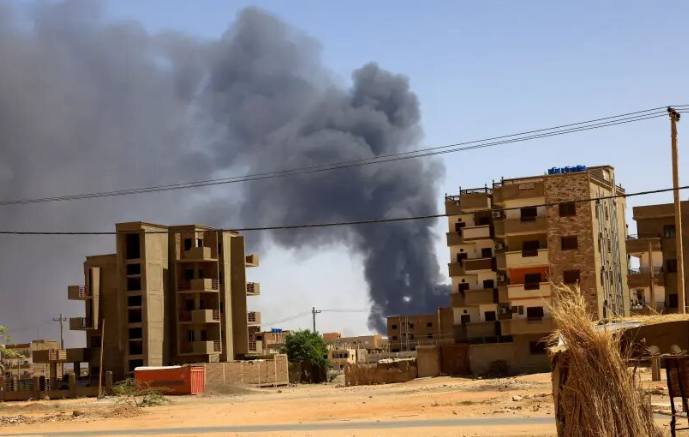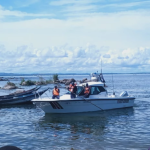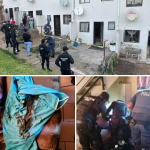On September 8, I had the opportunity to attend an exhibition at Station Pop Up on Ngara Road in Nairobi, featuring the works of two Sudanese artists—Huzifa Siddig and Waleed Mohamed. These artists were in the city as part of the Martin Ruth Initiative Award, which supports artists facing risks due to conflict.
For two years now, Sudan has been engulfed in a brutal civil war with no signs of resolution. The conflict, primarily a power struggle between the leaders of the Sudanese Armed Forces (SAF) and the paramilitary Rapid Support Forces (RSF), erupted on April 15, 2023, when violent clashes broke out between rival factions in the capital, Khartoum.
The war has already claimed the lives of nearly 15,000 people and displaced over 8.2 million, creating the world’s most severe displacement crisis. Close to two million Sudanese have fled to unstable neighboring regions such as Chad, Ethiopia, and South Sudan, overwhelming refugee camps and raising concerns about a potential wave of refugees attempting to reach Europe.
The United Nations, according to the Global Conflict Tracker, continues to appeal for increased support as over 25 million people are in dire need of humanitarian aid. The deteriorating food situation may soon trigger what could become the world’s worst hunger crisis. Mediation efforts have so far failed, with both sides refusing to cease hostilities. Moreover, allegations of foreign actors fueling the conflict by backing opposing factions have further complicated the peace process.
It is against this backdrop of turmoil that Huzifa and Waleed’s exhibition was held in Nairobi, showcasing artwork that captures the difficult and often interrupted periods of peace in Sudan’s troubled history. Through their art, they engage in thought-provoking conversations about the country’s past and present, particularly the recurring cycles of violence that have come to define its modern history.
Waleed, a fine arts graduate, explores themes of nostalgia in his work, reflecting on the era of carefully staged family portraits taken in photo studios—an era now shattered by the ongoing conflict. On the other hand, Huzifa, whose work is influenced by his architectural background, delves into the dynamics between oppressor and oppressed, often illustrating the power struggles and human suffering that arise from these relationships.
In one of his artworks, a man, seemingly confronted by a violent figure in the midst of intense conflict, is depicted kneeling with his hands raised in surrender. Collectively, the artworks by Waleed Mohamed and Huzifa Siddig reflect a highly contemporary and distinctive expression of Sudanese art.
According to the latest situation report from 26 September, shared by the Horn of Africa Civil Society Forum and Europe External Programme with Africa (EEPA)—a Belgium-based organization focused on peace-building, refugee protection, and resilience in the Horn of Africa—the Sudanese Armed Forces (SAF) launched a large-scale offensive against the Rapid Support Forces (RSF) in Khartoum on 25 September. The attack targeted key RSF positions through airstrikes and ground assaults in central, western, and southern parts of the capital.
The SAF currently controls three main bridges leading to Khartoum, including two connecting Omdurman and Khartoum. Retaliatory strikes in northern Omdurman resulted in the deaths of at least four people and left 14 others injured. Additionally, a SAF airstrike destroyed Nyala International Airport in South Darfur, severely damaging the main terminal and VIP lounges.
Médecins Sans Frontières (MSF) has reported alarming death rates among pregnant, birthing, and postpartum women and children in South Darfur due to the lack of medical services, a situation worsened by the ongoing conflict.
In a distressing development, the cultural heritage site of Naga’s ancient ruins was breached and remains unprotected, according to the Munich Museum of Egyptian Art. UNESCO has also raised concerns that Sudan’s cultural heritage is at unprecedented risk of being entirely destroyed by the relentless use of mortars, barrels, and projectiles deployed by both sides of the conflict.



